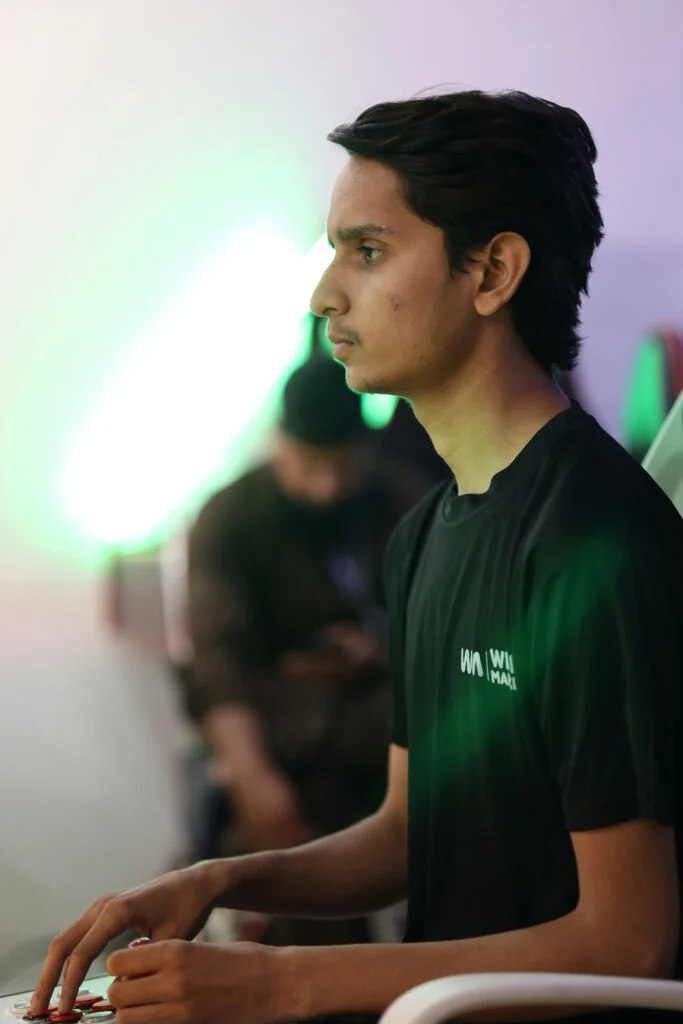The Concept of Mind-Body Gaming
Mind-body gaming represents an innovative approach to gaming that transcends traditional gameplay mechanics by integrating awareness of both mental and physical states. This concept revolves around the interplay between cognitive processes and physiological responses, particularly focusing on breath control as a key element. Games that harness mind-body practices encourage players to cultivate a deeper connection with their bodies and minds, promoting a holistic engagement during their gaming sessions.
At its core, mind-body gaming emphasizes the importance of self-regulation, which can significantly influence performance and enjoyment. By incorporating breath control techniques, players can learn to manage their stress levels, thereby improving focus and concentration. Researchers have observed that players who utilize these techniques report heightened engagement and a more immersive experience. As players consciously regulate their breathing—through techniques such as deep and slow inhalations—they often find themselves more attuned to both game dynamics and their emotional states.
The psychological aspects of mind-body gaming are equally noteworthy. Studies indicate that a player’s mindset can directly affect their in-game performance. A calm and centered state of mind, facilitated by breath awareness, can enhance decision-making abilities and reaction times. This shift from a purely competitive mindset to one that values mindfulness can transform how players engage with games, fostering a more rewarding and introspective experience.
In essence, mind-body gaming invites players to unlock their potential by honing their awareness. This approach creates a space where gaming serves not just as a form of entertainment, but as a pathway to enhanced mental well-being and skill development. As the gaming landscape continues to evolve, incorporating mind-body strategies could pave the way for innovative experiences that prioritize both enjoyment and personal growth.
Games That Utilize Breathing Techniques
In recent years, the incorporation of breathing techniques into video games has emerged as a novel way to enhance player engagement and foster a deeper mind-body connection. Games such as Deep and Nevermind exemplify this innovative approach, utilizing players’ breath as a vital game mechanic.
Deep, for instance, is a therapeutic game that immerses players in a serene underwater environment where they must synchronize their breathing with the game’s rhythm. As players inhale and exhale, the game responds, translating breath patterns into in-game actions. This dynamic interaction encourages mindfulness and relaxation, effectively transforming simple breathing into a control mechanism. By using breath as a fundamental game mechanic, Deep enhances the player’s awareness of their physiological state, thus improving overall gameplay experience.
Similarly, Nevermind caters to a unique audience by integrating breathing techniques into its narrative-driven experience. The game is designed to adapt to players’ stress levels, which are measured through heart rate and breathing rhythms. When players become anxious, such as during intense gameplay or challenging scenarios, the game automatically alters its difficulty. This innovative mechanic helps players embrace their emotional responses, while simultaneously teaching them to regulate their breath for optimal performance and stress management.
Additionally, virtual reality (VR) mods have emerged that further push the boundaries of breathing as a gameplay element. Various VR experiences now integrate biofeedback systems, allowing players to see the effects of their breath on their virtual surroundings. These experimental mods not only enhance immersion but also promote a mindfulness practice, inviting players to maintain control over their autonomy in a virtual world.
Collectively, these games demonstrate how breathing techniques can be harnessed to foster a more profound connection between mind and body, transforming gaming into a holistic experience that goes beyond entertainment. As the gaming landscape continues to evolve, the integration of these mindful practices may lead to even more innovative titles in the future.
Breathing as a Controller: How It Works
The concept of utilizing breathing as a controller in video games represents a significant leap in gaming technology and design. By monitoring the player’s breath in real-time, developers can create an immersive experience that goes beyond conventional input devices. Various sensors, such as respiratory belts or biofeedback devices, are employed to track the rate and depth of breathing. This data is then translated into in-game actions, enhancing the gameplay experience.
In essence, the game interprets the player’s breath patterns, allowing them to perform actions based on physiological responses. For instance, deep, steady breaths might correspond to actions requiring precision and calmness, such as aiming or navigating tricky environments. Conversely, rapid breathing could trigger urgent maneuvers, such as dodging or sprinting from threats. This dynamic interaction creates a unique layer of gameplay that encourages players to become aware of their emotional and physical states.
The technology behind this innovative approach integrates various disciplines, including psychology, physiology, and game design. Advanced algorithms interpret the nuances of breath data, allowing for responsiveness that adapts to the player’s style. This not only deepens immersion but also encourages self-awareness, as players must modulate their breathing to control in-game actions effectively. Furthermore, the feedback loop established between the game and the player creates a compelling narrative that evolves with each session, making the experience more engaging.
Overall, the use of breathing as a controller is not merely a novel gimmick; it encapsulates a shift towards more holistic and experiential gameplay. By enabling players to harness their physical state in controlling gameplay, it paves the way for innovative gaming experiences that deepen emotional engagement while challenging traditional notions of how games are played.
My Personal Experience with Stress Levels
Throughout my life, I have encountered various situations that have led to heightened levels of stress. Whether it was managing deadlines at work, navigating personal relationships, or dealing with unexpected challenges, I often found myself overwhelmed. This constant state of stress not only affected my emotional well-being but also took a toll on my physical health. As I sought solutions to alleviate this chronic stress, I stumbled upon an innovative genre of gaming that emphasizes mindfulness through breath control.
Initially, I was skeptical about whether a game could genuinely impact my stress levels. However, I was intrigued by the concept of using breath tracking to enhance gameplay. The game served as a virtual guide, prompting me to remain aware of my breathing patterns as I navigated through various challenges. This practice caused me to reflect on my previous approach to stress. I realized that I often held my breath during moments of anxiety, which only exacerbated my worry. By focusing on my breath during gameplay, I began to cultivate a sense of calm that I had long wished to achieve in my daily life.
<pas a="" ability="" allowed="" and="" anxiety="" approach="" balanced="" beyond="" breath="" breathing="" but="" challenges="" changes="" continue="" continued="" control="" could="" create="" decreased="" embedded="" emotional="" engage="" entire="" equilibrium="" equipped="" everyday="" exercises="" experience="" game,="" gameplay="" gaming="" greater="" guide="" i="" improved,="" in="" incorporate="" just="" leading="" levels="" life.
In-Game Performance: The Impact of Breathing
Breathing plays a crucial role in numerous physiological and psychological processes, which can significantly affect in-game performance. Learning to control breathing effectively has been transformative for many players, including myself. Engaging in this practice has led to marked improvements in focus, reaction times, and overall gaming experience.
As I began to explore various breathing techniques, I noticed that controlled breathing allowed me to maintain a heightened state of awareness while playing. This heightened focus enabled me to better anticipate in-game movements and react swiftly to changing scenarios. For instance, during intense gameplay moments, practicing deep and rhythmic breathing reduced my heart rate and alleviated anxiety, which in turn led to clearer decision-making. The correlation between breathing patterns and gaming performance became evident as I found that my concentration improved dramatically.
Moreover, the impact on reaction times cannot be understated. In fast-paced games, every millisecond counts. By honing my breathing techniques, I was able to achieve a more relaxed state, which contributed to faster cognitive processing. This phenomenon applies to various genres of games, from competitive first-person shooters to intricate strategy games, where quick reflexes can be the difference between victory and defeat. Anecdotal evidence from fellow gamers also supports this observation, with many attesting that improved breathing practices have helped them manage stress levels and enhance gameplay.
By integrating specific breathing exercises into my gaming routine, I found that not only did my performance improve, but my overall enjoyment of the game also increased. Engaging with the game at a deeper level became possible as anxiety diminished and focus intensified. Overall, mastering my breath has undeniably changed the way I approach gaming, highlighting its importance in achieving peak performance.
Learning to Breathe: Techniques and Strategies
Effective breathing can significantly enhance a player’s gaming experience by promoting focus, reducing anxiety, and improving overall performance. Learning to breathe efficiently involves understanding and implementing practical techniques that can be practiced both inside and outside of the game environment. One foundational strategy is diaphragmatic breathing, which encourages deeper breaths that optimize oxygen intake. To practice this technique, players should sit or lie down comfortably, place one hand on their chest and the other on their abdomen, and inhale deeply through the nose, ensuring that the abdomen rises rather than the chest. This exercise trains the body to use the diaphragm effectively, which can lead to improved stamina during gaming sessions.
Another valuable strategy is the 4-7-8 breathing technique, which focuses on rhythm and timing. Players should inhale for a count of four, hold their breath for seven counts, and then exhale for a count of eight. This pattern helps to regulate the breath and can lower stress levels, which is particularly beneficial before engaging in high-pressure gaming situations. Regular practice of the 4-7-8 technique, even for a few minutes a day, can lead to greater control and serenity during gameplay.
Integrating these techniques into a daily routine is essential for lasting improvements. Players can set reminders to engage in focused breathing before or during breaks in gaming sessions. Additionally, incorporating breathing exercises into warm-up routines prior to gaming can create a habit, reinforcing the connection between breath control and performance. Experimenting with various techniques to find what suits individual needs may yield the best results. Through mindful practice and consistency, players can experience a transformative impact on their gaming experience by effectively mastering the art of breath control.
Unexpected Benefits of Mind-Body Gaming
The advent of mind-body gaming, particularly through games that track breathing, has revealed a myriad of unexpected benefits that can significantly enhance the gaming experience. Traditionally associated with entertainment, gaming is increasingly recognized for its potential to improve mental health and emotional regulation. By incorporating elements that promote mindfulness, such as breath control, players can foster a heightened sense of calmness while engaging in their favorite activities.
One of the most notable advantages of these games is the improvement in overall mental health. The act of consciously regulating one’s breath not only aids concentration but also allows for a deeper connection between the player’s mind and body. Research suggests that such practices can help alleviate anxiety, reducing feelings of stress and promoting a more positive gaming atmosphere. Gamers often find themselves in competitive scenarios that can lead to heightened emotions; however, the integration of breathing techniques into gameplay can help mitigate these feelings, resulting in a more balanced emotional state.
Moreover, emotional regulation plays a crucial role in enhancing performance and enjoyment in games. Players who are equipped with tools to manage their emotions effectively can respond to in-game challenges with greater composure, allowing for more strategic decision-making. This newfound awareness fosters not only better gameplay but also longer-lasting enjoyment and fulfillment during gaming sessions.
In addition, the incorporation of breath tracking can lead to a newfound sense of awareness pertaining to one’s mental state. This introspection can encourage players to take breaks when needed, prioritize self-care, and create healthier gaming habits. The holistic approach of mind-body gaming encourages an understanding of the interconnectedness of physical health and emotional well-being, making it a transformative experience for players who embrace its principles.
Less Rage-Quitting: A New Perspective
Breathing techniques have emerged as a powerful tool in managing emotional responses during gaming sessions. As I delved into the world of mindful breathing, I discovered an unexpected transformation in how I approached challenges in my favorite games. Rather than succumbing to frustration and exiting the game in a fit of rage, I found an alternative path that led to greater emotional resilience.
The practice of focusing on my breath while gaming enabled me to create a buffer against the rush of reactive emotions that often accompany competitive play. Instead of allowing the heat of the moment to dictate my responses, I began to pause, take deep breaths, and refocus my mind. This shift to conscious breathing allowed me to observe my emotions rather than react impulsively to them. As I embraced this new mindset, I noticed a significant decrease in my tendency to rage-quit and a corresponding increase in my patience.
Breathing became a bridge to improved emotional regulation. By consciously integrating these techniques into my gameplay, experiences that once triggered anger and disappointment morphed into opportunities for learning and growth. I began to approach difficult levels or challenging competitors with a sense of curiosity rather than frustration. The profound impact of this practice shifted my perspective on gaming; it became less about winning or losing and more about the journey and the lessons learned along the way.
This newfound patience did not only enhance my performance but also enriched my overall experience. I was no longer playing to avoid defeat; I was playing to engage fully with the game itself. Consequently, I developed a healthier relationship with gaming, one that celebrates every attempt and fosters resilience in the face of adversity. As a result, I strongly advocate incorporating breathing techniques into one’s gaming routine as a means of transforming reactive emotions and promoting emotional health.
My Anxiety Improved Too: The Broader Impacts
Engaging with a game that emphasizes breath control has had a profound effect on my overall mental health, extending well beyond the gaming experience. Initially, the primary focus was on enhancing my performance and focus during gameplay, but as I delved deeper into the mechanics, I realized that the principles of breath control significantly influenced my day-to-day life. The skills acquired through gaming became a useful toolkit to manage real-world stressors and anxiety.
During high-pressure moments in the game, I learned to regulate my breathing, which subsequently reduced feelings of panic and anxiety. This practice of structured breathing allowed me to feel more grounded, providing an anchor point when faced with overwhelming situations outside of the gaming world. For instance, before presentations or crucial meetings at work, I began to apply the same breath control techniques. The result was remarkable; I experienced less anxiety and increased concentration, leading to more effective communication and decision-making.
The transformation became even more evident during interpersonal interactions. Previously, social anxiety often resulted in a racing heart and muddled thoughts. However, by incorporating the breath work techniques from my gaming experience, I found a calming rhythm that allowed me to be present during conversations. Not only did this reduce my anxiety levels, but it also fostered stronger connections with others.
Moreover, immersing myself in a game focused on mindfulness and breath awareness has encouraged me to explore other related practices, such as meditation and yoga. These complementary activities further enriched my mental wellness journey, allowing me to cultivate a more balanced and resilient state of mind. Breath control, learned through gameplay, has become a vital component in my efforts to maintain mental clarity and emotional stability in my daily life.

It could cover a range of topics related to health, wellness, beauty, personal growth, and social issues, all from the perspective of striving for beauty, intelligence, youthfulness, and impartiality





